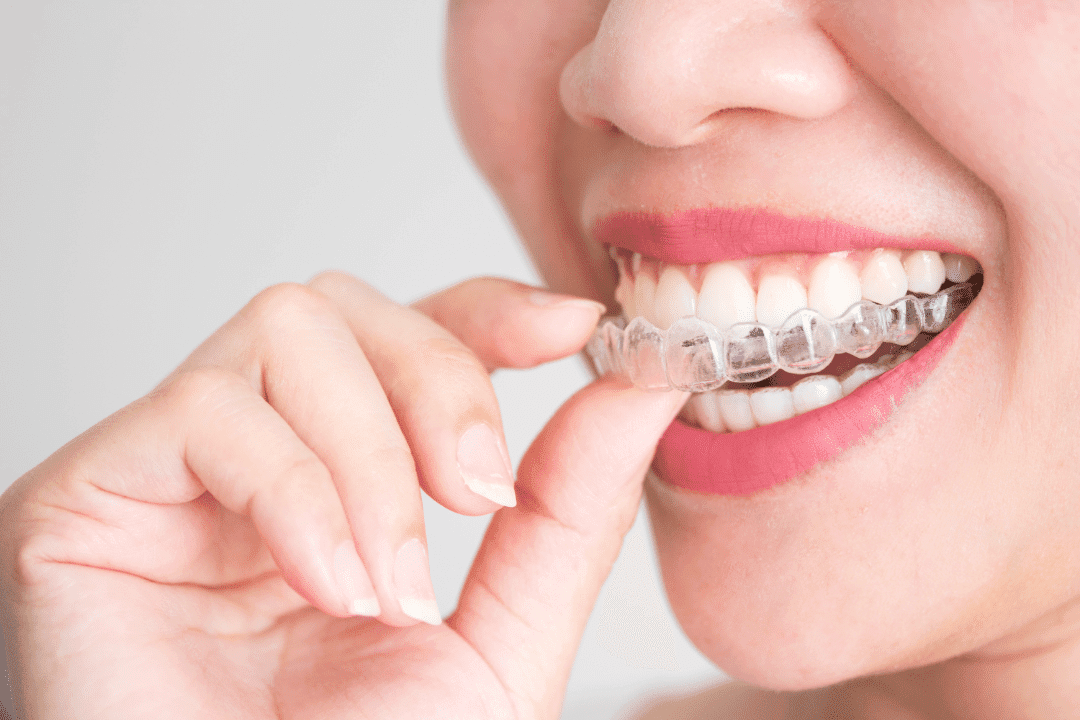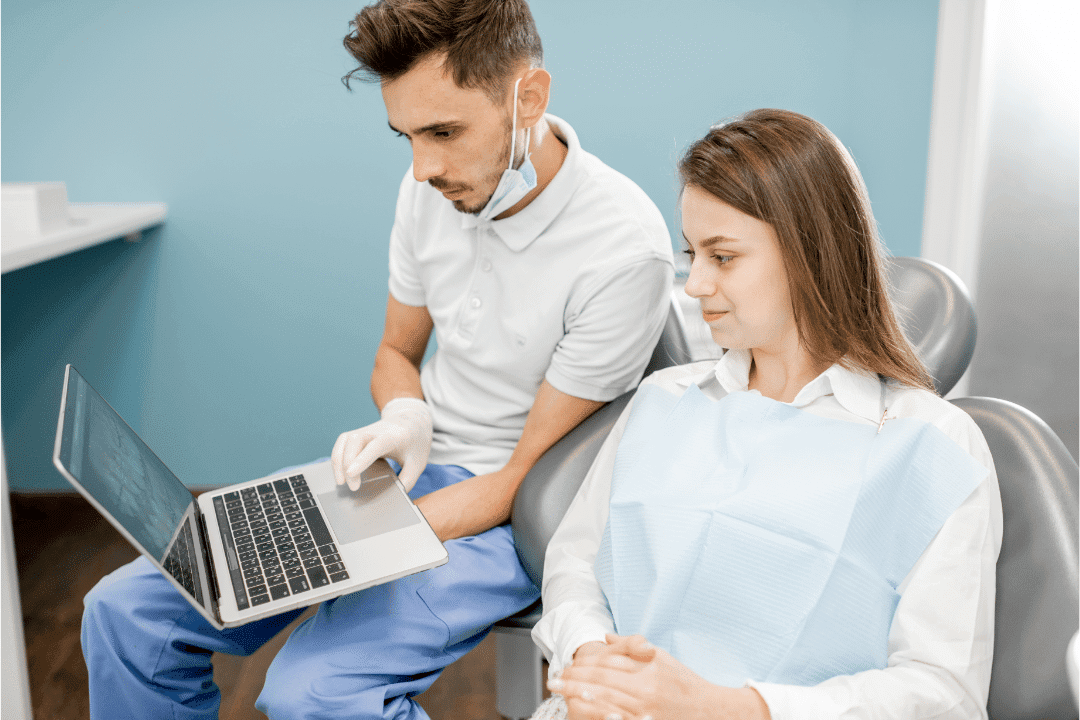7 Things You Need to Know About Invisalign Attachments
Let’s find out how Invisalign attachments help clear aligners straighten your teeth
Now more than ever, adults and teens are choosing Invisalign to straighten their smile. Not only are they less visible than traditional braces, clear aligners can fix your teeth in less time and are capable of handling more advanced cases thanks to Invisalign attachments.
Attachments fall under the umbrella of Insalign refinements, and not every patient will need them. But if your teeth aren’t moving in accordance with your plan, then Invisalign attachments provide extra force to get you back on track. If your orthodontist has recommended you get Invisalign attachments to straighten your teeth, keep reading to find out more about how they work and why they’re used.
What Are Invisalign Attachments & Do They Hurt?
Some treatment plans require attachments to move teeth into their correct position
Invisalign trays are molded to perfectly fit your attachments.
Though many don’t know about Invisalign attachments, they are very widely used and expand the types of cases Invisalign can treat. Without attachments, only the force from the aligner trays are moving your teeth which is insufficient for certain orthodontic needs. When you get Invisalign attachments, the orthodontist bonds a small piece of composite filling material to the middle of your tooth. These bumps provide an anchor point for your aligners and enable them to exert more orthodontic force on individual teeth and are typically used for extrusion, intrusion, or rotational case needs.
While they are closely related, people often confuse attachments for Invisalign buttons, which are small auxiliaries that are placed onto your clear aligner trays to enable rubber bands to promote more aligner force. Buttons are sometimes all that is required to coax stubborn or difficult to move teeth into cooperating with the treatment plan.
Attachments themselves don’t necessarily hurt, but they can be a cause of Invisalign pain. For instance, because they are exerting more force, they can make your trays feel tighter. Try a cold compress to numb the area or an over the counter pain reliever if necessary. Attachments can also cause your aligners to impact other areas of your mouth where a sore or abrasion could occur. If this happens to you, a bit of dental wax for braces applied to that area can provide relief until your mouth adjusts to the friction.
2. Are Invisalign Attachments Visible?
Invisalign attachments are designed to blend in as much as possible
Attachments are designed to blend into your teeth.
Many are initially concerned that their aligners will be more visible to others once the attachments are put on. Though it might sound like attachments would make your aligners more visible, the end result is that your orthodontic correction remains practically unnoticeable to others. Your orthodontist will color match your attachments to the color of your teeth so they blend while you are using Invisalign.
In fact, you might notice your attachments more when your aligners aren’t in your teeth. Consider this more motivation for wearing your trays as much as possible!
3. What Shape Are the Attachments?
Depending on your specific needs, your attachments may be shaped differently
Attachments are bonded to the front of the teeth.
Attachments are not necessarily always round. They can come in several different shapes and sizes depending on the way your aligners are moving your teeth. For example, common teeth problems like tooth rotation can be helped massively by square or triangle shaped attachments.
4. Is it Difficult to Clean The Attachments?
If you need attachments for your Invisalign treatment, you might have to adjust your cleaning habits
Taking extra care to brush and floss is an important part of wearing Invisalign.
A common question about Invisalign attachments is whether it’s difficult to brush and floss around them. The answer is yes, it's going to be a bit more difficult to get all food particles away from the attachments on your teeth. It shouldn’t necessarily impact your flossing, although it could snag the floss when in your mouth. Be mindful but diligent; you should floss regularly while wearing your Invisalign!
5. Will I Need an Attachment on Every Tooth?
The exact number of attachments is only determined by your orthodontist
Your orthodontist will let you know how your attachments will work.
If you are worried that you might need an attachment on every tooth — relax! If you are approved to straighten your teeth with Invisalign, you won’t need extra pressure on every single tooth. Though the bumps and their placement are determined by your orthodontist, most people only need them on a tooth by tooth basis.
6. How Do They Adhere the Attachments to My Teeth?
The process of installing Invisalign attachments is actually quite easy
Getting attachments is completely painless.
When you go to the orthodontist to get your attachments bonded to your teeth, the process is simple and fast. First, your orthodontist will mark the exact location where the attachment will be placed. Next, your orthodontist will adhere the attachment to your teeth and cure it so it stays firmly in place. When your Invisalign treatment is complete and your orthodontist is ready to remove your attachments, removing the attachments is even easier. An orthodontist will simply buff off the attachment and you’re good to go!
Note: never attempt to remove your attachments on your own! It could significantly damage your teeth.
7. Does Every Invisalign Patient Require Attachments?
Though attachments are very common, they are not necessary for every single Invisalign patient
Only your orthodontist determines your need for Invisalign attachments.
While Invisalign can correct a wide range of orthodontic issues, there are some issues that can only be corrected by braces. With attachments, more and more people are able to use Invisalign to straighten their teeth rather than hassle with braces. So, though attachments make Inviaslign available to a wider group of people, not every Invisalign treatment includes attachments. If your orthodontist recommends attachments to complete your Invisalign journey — there is no reason to fret! It's only one extra step to a straighter smile.
If you still have questions about Invisalign attachments or are wondering if Invisalign is right for your smile, schedule a consultation with Legacy Orthodontics, Leesburg VA’s premier Invisalign provider. We’ll answer all your questions, show you what your smile can look like, and help you determine if Invisalign is the best method for straightening your teeth.








